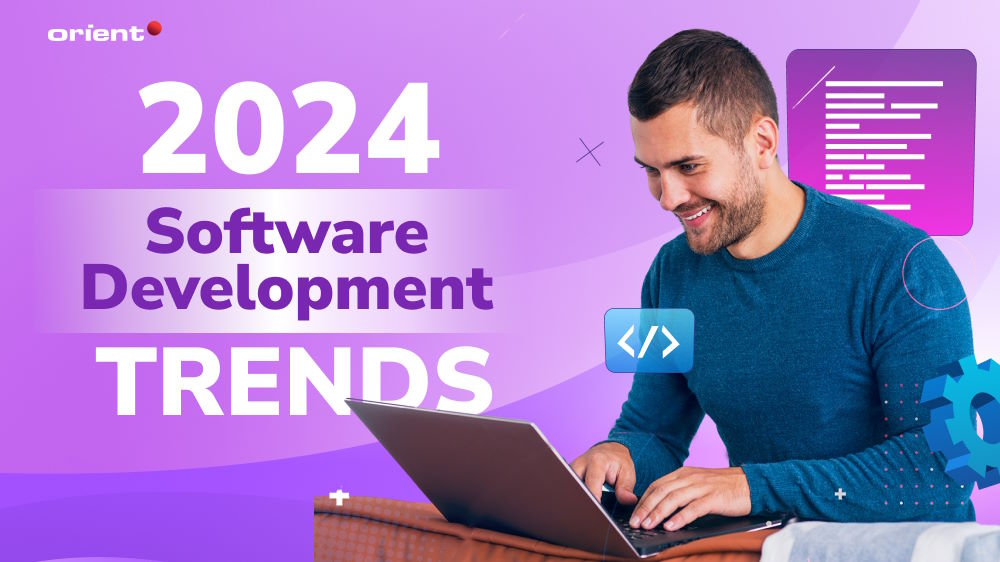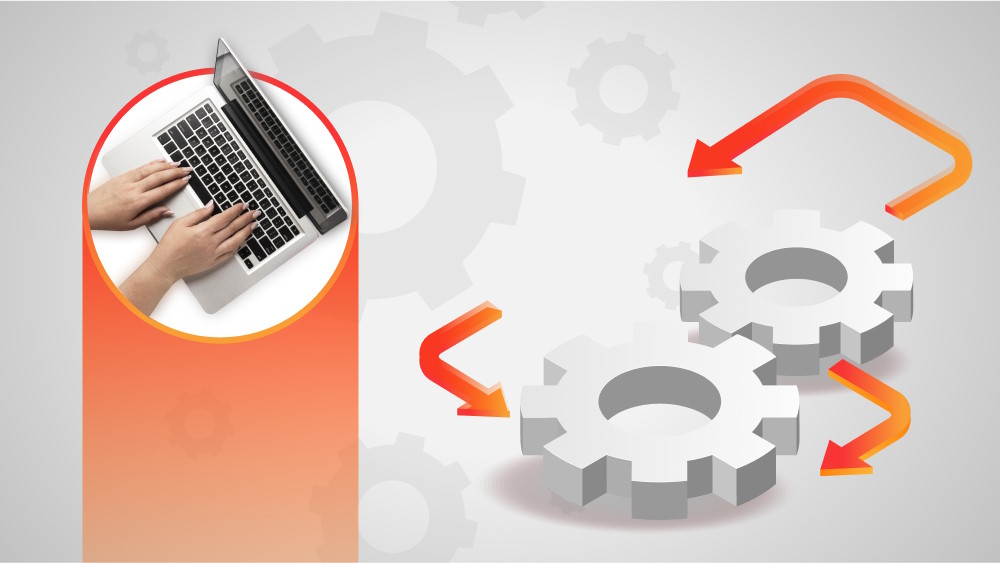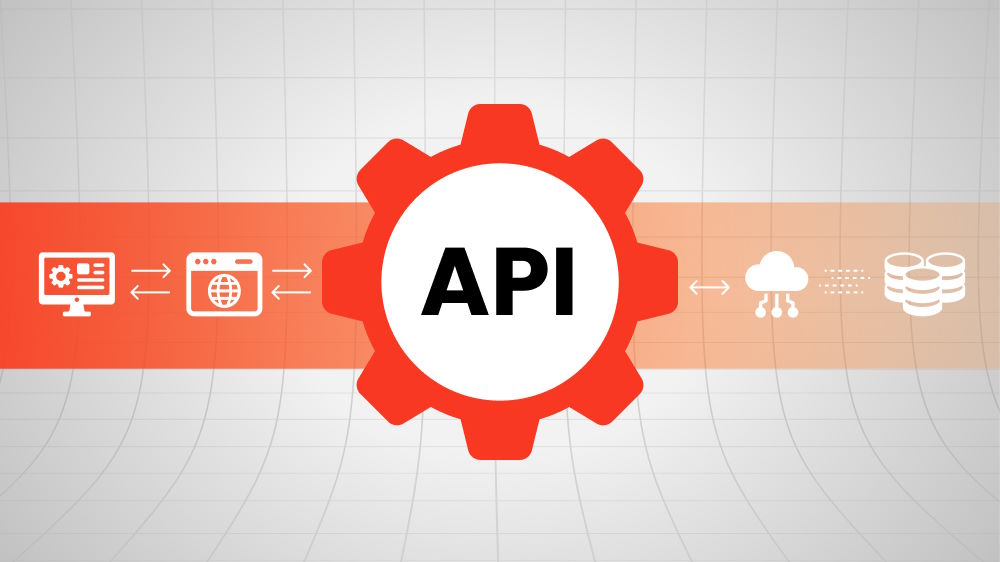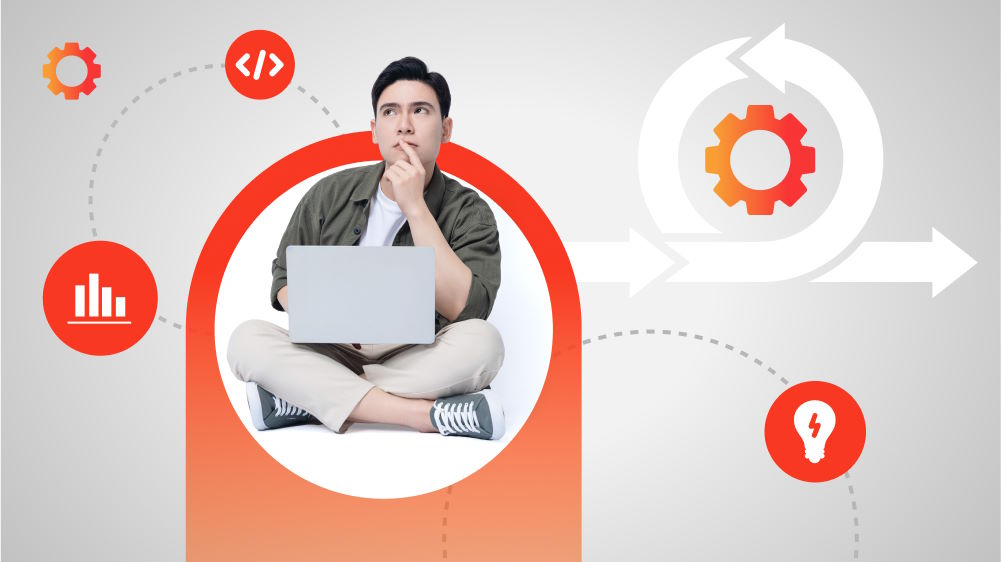Stay Ahead of the 2024 Latest Software Development Trends

Content Map
More chaptersDigital transformation is no end point; it is only the beginning. The IT industry, especially, has witnessed massive changes and rapid advancements over the past few years. The embracing integration of artificial intelligence and machine learning into the software engineering sector, the everyday use of robotic solutions, the growing enthusiasm for open-source projects, and the dramatic rise in mobile devices and platforms have been good signs of the continuous growth and transformation of the technical ecosystem. These paradigm shifts are partially setting the stage for an explosion of new emerging technologies and trends in the near future.
Indeed, there is an exciting future for innovation reshaping the context of software development. Confidently, 2024 is anticipated to be a year that marks a brand-new chapter for the software industry with a whole vast array of new technologies and approaches.
With the latest software trends popping up and down perpetually, industry leaders, business owners, and developers alike are eager to know which trends will dominate the tech space and how they can stay ahead of the game. Thus, let’s take a tour through some of the most talk-about movements that are likely to rule the latest software development trends in the next few years. Note that all 2024 tendencies are novel but are, in some way or another, the continuation of what started a decade ago.
Low-code & No-code Solutions in the Software Development Process
Starting to develop software from the ground up is a tough undertaking. Not only does a project cost a fortune to be completed on the correct trajectory, but it is also often riddled with risks of failure and challenges. It is estimated that close to 20% of software projects fail due to numerous reasons, while roughly 52% are impeded by undesirable factors.
In the wake of such problems, low-code/no-code (LCNC) development has gained remarkable traction to accelerate app development delivery with little to no technical involvement. The no-code approach makes use of drag-and-drop interfaces to create a programming environment where practitioners can convert their ideas into real solutions with no concern for software development skills.
In a similar way, low-code platforms provide pre-built components and a visual interface to assemble them, making it easier for programming novices to build software efficiently. But still, low-code development allows and often requires some degrees of traditional coding. This is beneficial for building more complex or performance-intensive applications.
In sum, these two emerging trends are aimed at simplifying and democratizing the SDLC to the fullest. No-code and low-code development tools enable tech freshers, business analysts, citizen developers, or even non-technical individuals to build digital solutions with minimal coding knowledge. According to Gartner, by 2025, 70% of new software programs will be developed with low-code or no-code technologies, which used to be only 25% in 2020.
Embracing Cloud Computing

During the COVID-19 pandemic crisis, we have seen a worldwide expansion of remote work capabilities. Relocation of infrastructure and data to the cloud was an evident transition for many software development teams in order to continue business operations without interruption or stagnation. With cloud-based platforms, companies can store data remotely and access them from anywhere, anytime. Additionally, cloud services offer scalability, cost-efficiency, and increased security and data management capabilities. Thus, the booming of cloud services is natural then and also now.
Today, cloud computing has become an integral part of software engineering operations, so it is no surprise that 2024 will be another big year for cloud-based solutions. More companies will possibly be likely to continue to embrace cloud-native technologies, such as serverless computing and microservices, to drive agility and enhance delivery speed.
The Massive Growth of IoT Devices

In 2024 and beyond, the Internet of Things will persist with expansion and evolution. In 2023, there will be 15.14 billion IoT devices connected around the world. Stats forecast that the total number of IoT devices will rise to 29.42 billion by the end of 2030. This is a rightful prediction considering the number of edge devices, such as smart homes, wearables, medical devices, industrial sensors, and so forth, that are currently in use.
What does this increase mean? The higher demand for IoT devices and services will trigger more opportunities for software development. As a result, IoT development will continue to expand beyond its current limits to encompass new dimensions of automation and innovation using edge computing or AI-driven solutions.
IoT is set to play a bigger role in the future of software engineering. More connected devices that gather, store, and analyze data mean developers have to learn how to create apps capable of interacting with these devices and harness the power of data.
Artificial Intelligence Everywhere

Artificial intelligence is ubiquitous, becoming a catchphrase. But it is not a fad but a future-proof innovation in software design and creation.
The New Ally in Software Development
AI technology is far-reaching, and it is still advancing, so the public is starting to worry about how AI coders may eventually make developers obsolete someday or not. This concern is based on the assumption that machines are capable of self-programming, resulting in AI coding itself rather than requiring human assistance or intervention. This facet is not yet fully seen or validated, though. But it proves that the power of artificial intelligence and machine learning has reached such a level that they can join the coding game and become developers’ right hands.
Indeed, in software development, artificial intelligence can be used in multiple ways: Automating routine tasks, identifying patterns, providing recommendations, and heaps more. Typically, an AI chatbot can help with tasks like code analysis, automated testing, and debugging.
AI Chatbots Become Everyday Assistants for Software Developers
More than IT-specific tasks, AI chatbots are capable of becoming full-time personal virtual assistants to developers, aiding them in scheduling tasks, setting reminders and notifications, answering common queries, or handling more requests beyond the functionality of a simple chatbot. ChatGPT is a prospective candidate for that role.
It is not an exaggeration to say that ChatGPT has been the phenomenon of the past two years, marking a new era for generative AI as well as natural language processing (NLP) and other related technologies. Getting started with AI is not only the way of the future but will be one of the key trends in 2024 and certainly in many coming years.
Progressive Web Apps (PWA) Aim to Replace Native Mobile Apps

Progressive web apps, or PWAs, are basically web applications latest-software-development-trends-s. They combine the best features of web applications and mobile apps to bring a streamlined user experience. PWAs are built using standard web technologies, namely HTML, CSS, and JavaScript, but can be installed on devices like native apps.
Since Google first introduced the concept of PWAs in 2015, these software applications have become prominent due to their benefits, including faster loading speed and performance, offline accessibility through service workers, push notifications, minimized data storage space, and so on. Some even claim that PWAs are the future of mobile app development.
From the POV of web and mobile developers, PWAs help them build cross-device apps with little effort - no need to develop separate applications for specific operating systems. Plus, PWAs enable cost-effectiveness whilst enhancing customer experience and engagement. Therefore, the use of progressive web apps is set to rise sharply in the next few years, beginning in 2024.
New Programming Languages Show Up & Gain Momentum

Each and every year, the software development industry witnesses a shift in popularity and welcomes new programming languages coming to the scene.
In spite of the possible fluctuations, Python is trusted to continue its reign across various development types (web development, scripting, automation, scientific computing, machine learning, and artificial intelligence) in 2024 and perhaps years later. According to PYPL, Python has been staying on top of the most popular programming languages for two consecutive years (2022 and 2023), mostly preferred by data scientists, AI developers, and ML engineers.
Aside from Python, other coding languages are projected to gain momentum in 2024. One of the promising candidates for next year’s “star” must be the innovative language of Rust, which is designed to be safe, fast, and efficient for system-level programming. According to StackOverflow surveys, Rust has been voted as “the most beloved langs of all” in the past four years. In addition, the total searches for Rust have jumped to 278% within the past five years. Other langs, such as TypeScript, Go, Swift, or Kotlin, among many others, are also worth mentioning in terms of growing popularity.
More Use of Big Data in Software Engineering
Data has become the new oil, and more small businesses, companies, and enterprises are shifting toward becoming data-driven. Thus, the following year may be the time for a software development trend that involves the bigger role of big data analytics in various phases of SDLC.
With the advancement of big data analytics tools and techniques, developers can now collect, store, process, analyze, and retrieve vast amounts of data more efficiently than ever before. So they can gain insights into user behavior, detect patterns, forecast trends, and make more informed decisions about software design and development.
Cybersecurity as a Service
Previously, cybersecurity was mainly the responsibility of software development teams. However, this is changing as businesses become more concerned about cyber threats (E.g., double-extortion ransomware), which are getting more sophisticated over time. Hence, cybersecurity will always remain a top priority. They start to take action by investing in new technologies that can enhance security.
It means that software developers will need to focus on building secure applications rather than just creating new features. Many organizations are now turning to cybersecurity as a service (CaaS), which is a type of security solution that provides protection against cyber threats.
As businesses become more security-conscious, the demand for CaaS is expected to increase in the coming years. This will result in a greater focus on cybersecurity during the software development process and the emergence of new cybersecurity-related trends.
Quantum Computing on the Rise
Quantum computing is a type of computing where data is processed using quantum bits instead of classical bits. It has the potential to speed up calculations and solve problems that are difficult or impossible for traditional computers to handle.
As quantum computing becomes more sophisticated, it is likely to play a more significant role in software development. This means that software developers will need to learn how to use quantum computers to take advantage of their capabilities.
Already, several companies are investing in quantum computing, and it is expected to become more prevalent in the years to come. Therefore, you need to start learning about quantum computing and its application in software development to stay ahead of the competition.
Agile Methodologies for DevOps and Security Teams
Part of the reason for this demand is that security teams are finding it harder to handle all aspects of cybersecurity themselves. They need help, which is where DevOps and Agile methodologies come in.
Agile development has been around for a while, but recently, it has started to incorporate principles from both DevOps and Lean Security. This new approach, which is often called DevOps Security, provides a more holistic way of managing security throughout the software development process.
DevOps Security combines the best of both worlds by taking the speed and flexibility of Agile development and adding the security focus of DevOps. This allows organizations to quickly respond to security threats while still maintaining a high level of security.
As this approach continues to become popular, it is expected to play a significant role in shaping software development trends in 2024. So, both DevOps and security teams should make sure that they are up-to-date with the latest developments to stay ahead of the curve.
Containers Take Off
Containers are growing in popularity thanks to the support of leading organizations like Amazon (AWS), Google (GCP), and Microsoft (Azure). They are basically a way to package an application with all of its dependencies so that it can be run in any environment.
This makes them a popular choice for iOS and Android app development and cloud-based deployments, as they can be easily moved between different environments. In fact, AWS recently announced that it would be providing native support for containers to all its users.
This is good news for containers, as it will increase the level of support that they receive from top cloud providers. As this trend is forecasted to get more popular in 2024, more organizations are expected to use container-based solutions. This could lead to new software development trends, such as a greater focus on DevOps tools and processes for managing containers.
Put User Experience First
User experience, or UX, has always been a crucial part of software development, but it becomes even more critical as users become more discerning. Perhaps in the upcoming years, user experience design will take center stage as businesses realize that a great UX is essential to retaining customers.
This shift implies that developers must prioritize crafting an intuitive, engaging user interface and ensuring a seamless, glitch-free overall experience. Understanding human psychology and how individuals interact with digital products will be central to creating outstanding user experiences. Consequently, this could potentially trigger an increased demand for UI/UX designers and services within the software engineering industry.
Augmented Reality & Virtual Reality Take Software Development Beyond the Screen
AR (Augmented Reality) and VR (Virtual Reality) are two types of reality that are gaining popularity. AR is a type of reality enhanced by computer-generated images, while VR is a type of reality created using simulated environments.
Virtual reality is starting to show its true potential and that it can be used beyond entertainment. Many software development companies are now starting to use virtual reality for training, design, and collaboration. Augmented reality is also starting to be used more in software development. It is commonly used to provide users with more immersive experiences.
Since both AR and VR have the potential to revolutionize the way we interact with software, they will likely play a more crucial role in software development in the future. Already, there are a number of platforms that allow you to create AR and VR applications, such as Unity3D, Unreal Engine 4, and Oculus Rift. Who knows? By the time of next year, AR and VR technology could become standard elements in the software development process, shaping the industry like never before.
The Rise of Microservices-based Architectures
Microservices-based architectures are growing in popularity as they allow organizations to develop and deploy software faster than ever before. Instead of creating one big application with all the functionality, a microservices approach breaks it down into separate components or ‘microservices.’ That way, applications can be developed as a suite of independently deployable services that can communicate with each other over the network.
Although this approach requires more work on the front end, it can lead to faster development cycles and allow organizations to scale out their applications, when necessary, easily. As businesses adopt microservices architectures, new software development trends will likely emerge around them. For example, more organizations could use cloud-native tools to build microservices.
Wrapping Up
Now that we have gone through some predictions on the latest trends that have the potential to flourish in 2024 and perhaps years after that, as well. Still, there are so many other trendy things that stand an equal chance to shape the future picture of the whole software development landscape. The key to staying ahead in this field is being adaptable and open-minded, as the constantly evolving tech industry will continue to bring new challenges and opportunities. Stay curious, keep learning, and always be prepared for what’s next.
Always note that there will be nothing or nobody that can precisely anticipate and foresee the latest technologies, trends, or movements of the digital space as well as the software engineering industry. One more thing is set to become one of the 2024 software development trends, which is outsourcing.
A few years back, outsourcing services, especially offshore development, were not as popular as they are now. But today, it has become a usual and must-have element in modern software development projects because of the numerous benefits it offers. In 2024, this trend is expected to continue, with businesses worldwide outsourcing their software solutions to specialized teams from third-party companies. In this term, you probably need a partner who is capable of aiding your business or project in technical aspects as well as staying ahead of the latest industry trends, technologies, and tools. No need to search further. Here comes Orient Software. Check out who we are, what we do, and why you should collaborate with us for your current or future software development needs. Drop us a message and keep in touch today.







